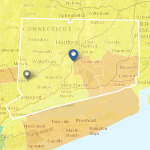AARP Livable Communities
You can find out right now by typing your address — or any U.S. address, zip code, town or city name — into the AARP Livability Index, a new online tool that calculates a score based on the latest data and indicators about an area’s housing, transportation, economy, community services and more. Since the index is customizable, users can find scores based on the features that matter to them most.
Livability Score
This score rates the overall livability of a selected neighborhood, city, county, or state on a scale from 0 to 100. It is based on the average score of seven livability categories—housing, neighborhood, transportation, environment, health, engagement, and opportunity—which also range from 0 to 100. We score communities by comparing them to one another, so the average community gets a score of 50, while above-average communities score higher and below-average communities score lower.
All scoring begins at the neighborhood level. Cities, counties, and states receive a score based on the average scores of neighborhoods within their boundaries. Most communities have a range of more- or less-livable neighborhoods, but for a community to get a high score, neighborhoods throughout it need to score well. This makes it even more challenging for a city, county, or state to get a high score: the more neighborhoods there are within a given boundary, the less likely it will be that all of them have high scores.
Creating a livable community is challenging, and so is getting a high livability score. To get a perfect score of 100, a neighborhood would have to be among the best in the country in each of the seven livability categories. Scoring highly across all categories is difficult. For example, a transit-rich neighborhood has its benefits, but it can also drive up housing prices. To help that neighborhood score highly in both categories, community leaders would have to commit to ensuring affordable housing near public transit is available.
http://www.aarp.org/livable-communities/
